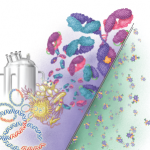
kapona/shutterstock.com
WASHINGTON, D.C.—Challenges abound for the manufacturing of biosimilar drugs—from their sheer size compared with small molecule drugs to the unknowable proprietary aspects of the originator drugs—an expert said at the 2016 ACR/ARHP Annual Meeting in a session titled Immunology Update: Biologic Agents: From Nature to Protein Engineering to Biosimilars.
Above all, because biosimilars are copies of originator drugs that have been created out of living cells, they can never be identical. The question is how different they are, and how to assess and manage those differences and their relevance, if any, said John Isaacs, MD, director of the Institute of Cellular Medicine and professor of clinical rheumatology at Newcastle University, Newcastle upon Tyne, United Kingdom.
Clinicians should be aware of these challenges and other thorny issues surrounding these medications, Dr. Isaacs said. “These are biological drugs, and they’re produced by living cells. They have to be because they’re so complicated,” he said.
This means that post-translational modifications will affect the primary protein product, which are not always predictable and dependent, for example, with regard to the precise culture conditions of the cells producing the biosimilar. Further, every batch of a therapeutic antibody (biosimilar or originator) comprises multiple subtly different variants, which is known as microheterogeneity.
“This is why biosimilars are not and cannot be identical to the originator in the same way as a chemically synthesized generic small-molecule drug can be identical to the original version of the drug,” Dr. Isaacs said.
The dawn of biosimilar drugs clearly brings the prospect for many advantages, he added. They’re far cheaper to develop because the regulatory process isn’t as lengthy, there’s less risk of failure in development, and the savings should mean wider availability of the drugs for patients. Developing a biosimilar can even lead to a greater understanding of the originator drug, because it becomes better characterized.
But process differences, including different cell lines and culture media, come with the potential for unpredicted effects, Dr. Isaacs said. These variables raise the prospect of immunogenicity, although not necessarily more immunogenicity.
“There’s no reason why it should be more immunogenic,” he said. “It could be less immunogenic, which would be a good thing. The fact is, there are unknowns.”
Dr. Isaacs described these implications:
Registries and post-marketing surveillance: Because biosimilars are licensed after relatively few patient exposures, it is even more important to monitor their effects long term than it is for originators.



